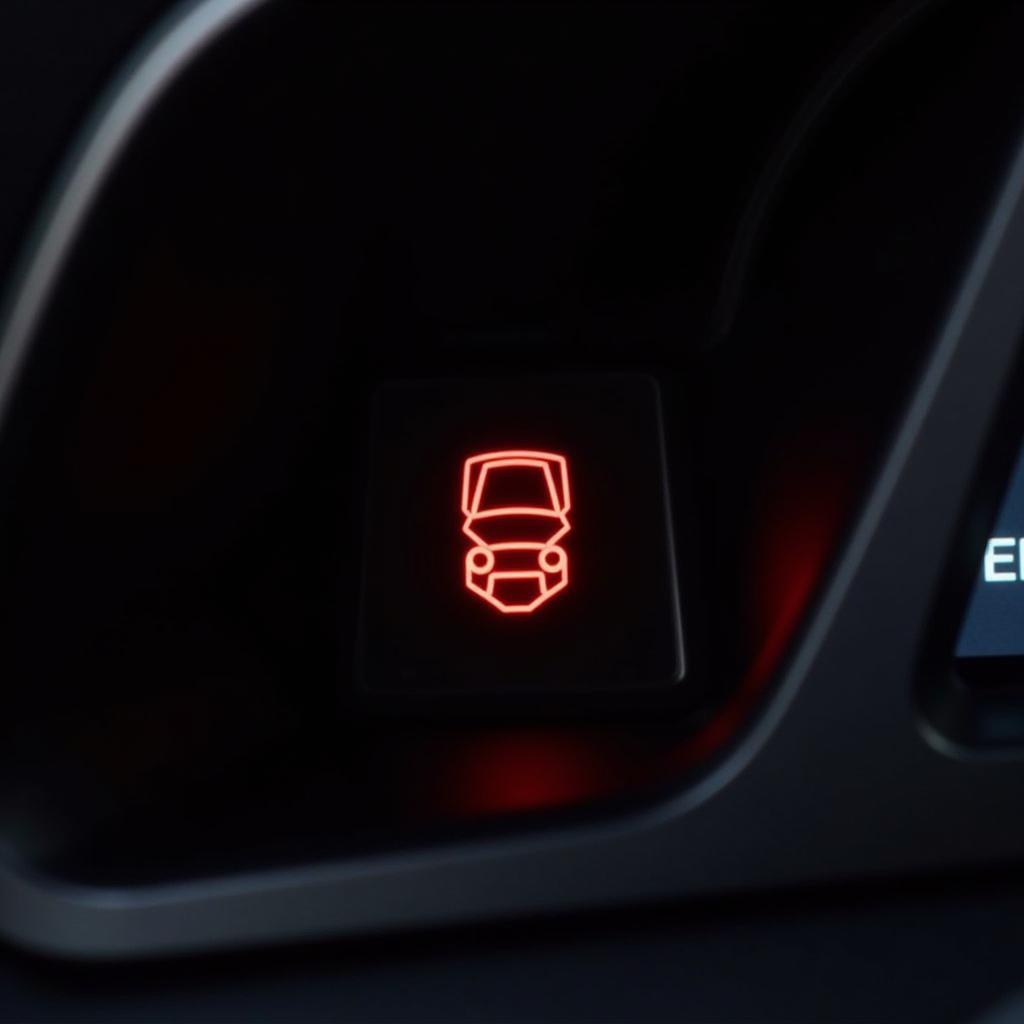A glowing brake warning light on your Hyundai Sonata’s dashboard can be unsettling. It’s a clear signal from your car’s onboard computer that something needs attention within the braking system. Ignoring this warning light could compromise your safety and lead to more costly repairs down the line. This comprehensive guide will delve into the common causes of a Hyundai Sonata brake warning light and provide you with practical steps to diagnose and potentially fix the issue.
Understanding Your Hyundai Sonata’s Braking System
Before we dive into troubleshooting, it’s helpful to understand the basics of your Hyundai Sonata’s braking system. This system is comprised of several crucial components working together:
- Hydraulic System: When you press the brake pedal, brake fluid amplifies that force within this system, transmitting it to the wheels.
- Brake Pads and Rotors: These components work in tandem to create friction, effectively slowing down the vehicle.
- Electronic Parking Brake (EPB): This system, standard in newer Hyundai Sonatas, provides an electronically controlled parking brake function.
- Anti-Lock Braking System (ABS): Designed to prevent wheel lockup during hard braking, the ABS ensures steering control is maintained in emergency situations.
- Electronic Stability Control (ESC): This system helps maintain stability and prevent skidding, especially on slippery surfaces.
Common Causes of a Hyundai Sonata Brake Warning Light
The brake warning light can illuminate for various reasons, ranging from simple fixes to more complex problems:
- Worn Brake Pads: This is the most common culprit. Brake pads have wear indicators that trigger the warning light when they thin out, signaling the need for replacement.
- Low Brake Fluid: The braking system relies on adequate brake fluid pressure. A leak or significantly low fluid level can trigger the warning light.
- Faulty Brake Light Switch: This switch activates the brake lights when you press the pedal. A malfunctioning switch can confuse the car’s computer, leading to the warning light.
- ABS Sensor Issues: Malfunctioning ABS sensors can disrupt the system’s ability to function correctly, triggering the warning light.
- Parking Brake Not Fully Released: If your Sonata’s parking brake isn’t completely disengaged, the warning light may stay on.
- Master Cylinder Problems: The master cylinder is the heart of the hydraulic system. A failing master cylinder can significantly impact braking performance.
Diagnosing the Problem: What to Check First
 Hyundai Sonata Brake Warning Light on Dashboard
Hyundai Sonata Brake Warning Light on Dashboard
- Check Your Parking Brake: Ensure it is fully released. Sometimes, a slight engagement can trigger the light.
- Inspect Brake Fluid Level: Locate the brake fluid reservoir under the hood (refer to your owner’s manual) and check the fluid level. If it’s low, there might be a leak.
- Examine Brake Pads: Visually inspect your brake pads through the wheel spokes. If they appear significantly thin, they likely need replacing.
When to Seek Professional Help
If the initial checks don’t reveal an obvious issue, or you suspect a more complex problem like a faulty ABS sensor or master cylinder, it’s crucial to seek professional help immediately.
Expert Insight: “Attempting to diagnose and repair complex brake system issues without proper knowledge and tools can be dangerous,” says John Miller, a certified automotive technician with over 20 years of experience. “It’s always best to err on the side of caution and consult a qualified mechanic.”
Preventative Maintenance: Keeping Your Brakes in Top Shape
- Regular Brake Inspections: Schedule brake inspections with every oil change or at least once a year.
- Timely Brake Pad Replacement: Don’t wait for the warning light. Replace brake pads according to your Hyundai Sonata’s recommended maintenance schedule.
- Brake Fluid Flushes: Have your brake fluid flushed and replaced every 2-3 years or as recommended in your owner’s manual.
Hyundai Sonata Hybrid Brake Warning Light
hyundai sonata hybrid brake warning light models may have additional factors influencing the brake warning light.
Conclusion: Prioritizing Your Safety
Addressing a Hyundai Sonata brake warning light promptly is crucial for your safety and the longevity of your vehicle. By understanding the common causes and following the suggested troubleshooting steps, you can take the first steps towards resolving the issue. Remember, when in doubt, always consult a qualified mechanic to diagnose and repair any brake system problems. Regular maintenance and timely repairs will keep your Hyundai Sonata’s braking system in optimal condition, ensuring a safe and enjoyable driving experience.
